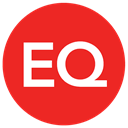 Login
Login
Services for Individuals
-
 Shareowner Online View your portfolio and investment plans, or buy stocks directly from the company. Download forms and get answers to frequently asked questions for your stock accounts
Shareowner Online View your portfolio and investment plans, or buy stocks directly from the company. Download forms and get answers to frequently asked questions for your stock accounts -
 EQ Elect Our portal to assist shareholders with completing documents for receiving their entitlement proceeds related to a merger or other corporate event.
EQ Elect Our portal to assist shareholders with completing documents for receiving their entitlement proceeds related to a merger or other corporate event.
Services for Companies
Services for AST Customers












